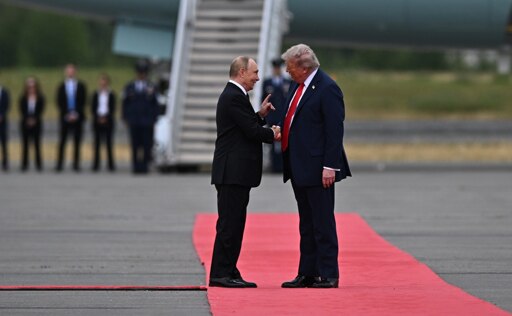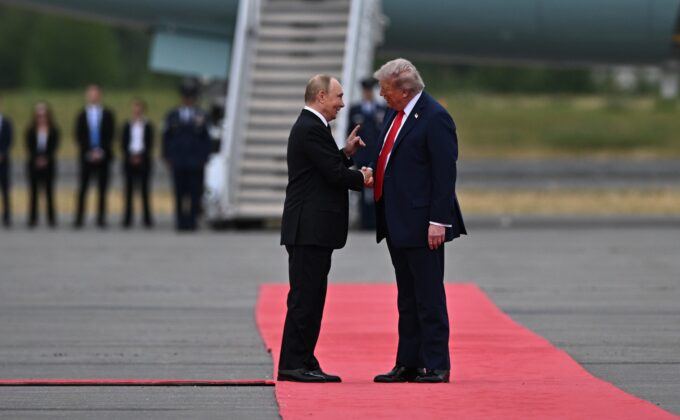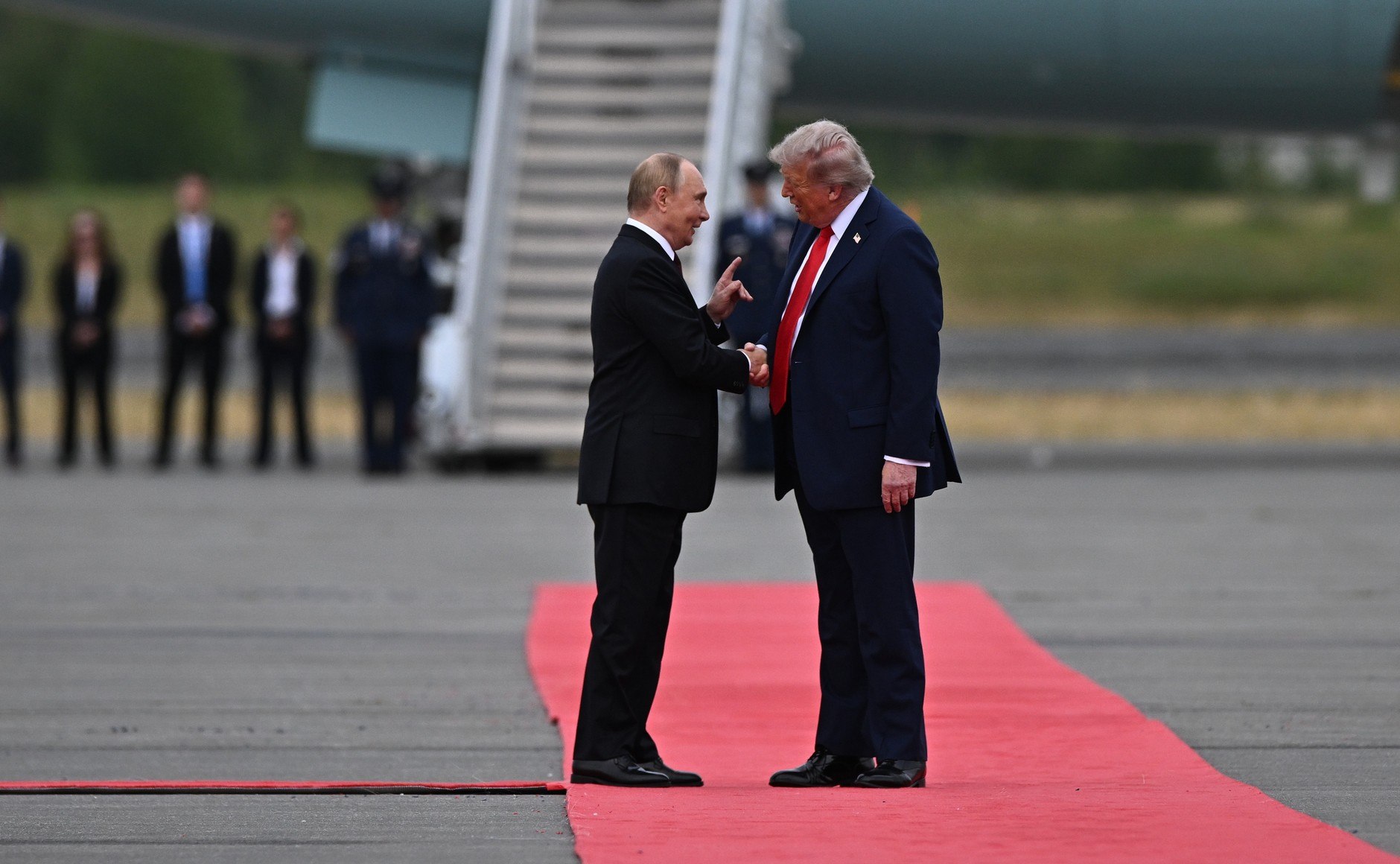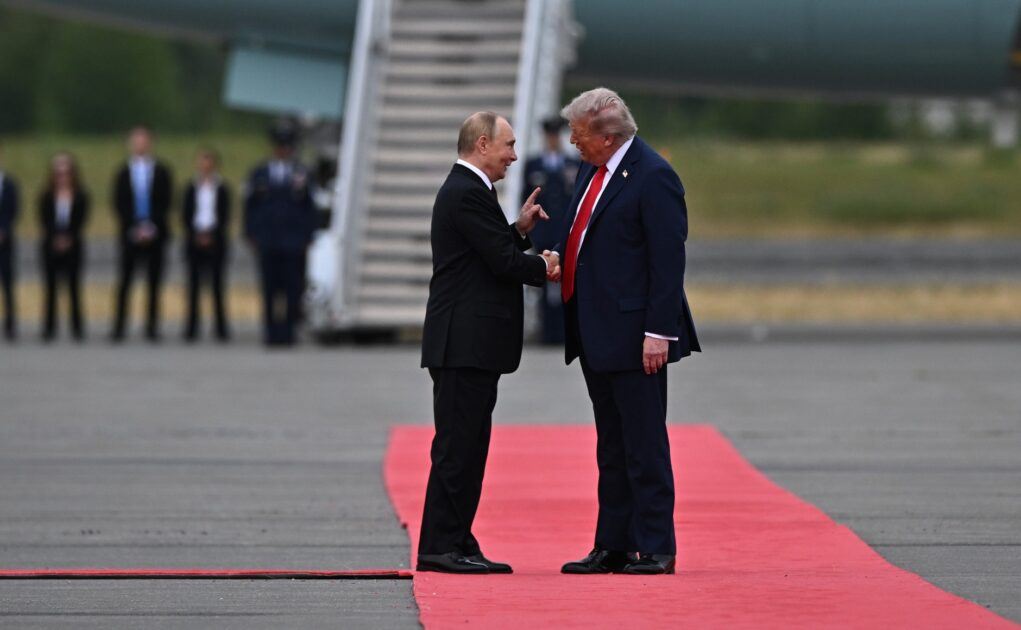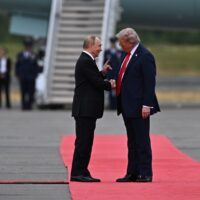Photograph Source: kremlin.ru – CC BY 4.0
Given that chances of Ukraine war coming to an end soon are dim, one is compelled to deliberate on diplomatic hype raised about Alaska summit regarding it. Of course, President Donald Trump’s primary motive may be to improve ties with Russia. But where does this place his aim to enhance tariff’s against India if it continues to buy oil from Russia? Trump wants India to purchase oil from US. This hardly seems suggestive of US-Russian ties progressing beyond the stage of diplomatic cordiality, marking “friendship,” displayed by Trump and Russian President Vladimir Putin towards each other at Alaska. Putin is certainly keen to improve Russian ties with United States but without Ukraine-crisis acting as an obstacle.
In addition, Putin is not unconscious of tariff-card Trump is trying to use against India. It may be noted, after his Alaska meeting, he updated several allies of Russia about his talks with Trump. These included- Brazil, India, South Africa and four Central Asian allies.
Besides, as reports indicate, Russia wants India to continue buying oil from it. Russia is also considering expansion of nuclear cooperation with India. Options of a trilateral meeting with Russia, China and India are also on the cards. Indian Prime Minister Narendra Modi is scheduled to visit China in the coming days. Each of these points strongly indicates that Putin is apparently not unconscious of Trump’s probable aim to win over Russian allies by his tariff-strategy. Putin is no mood to lose them.
Trump’s Alaska-meeting may also have been directed towards strengthening American ties with Russia and weaken latter’s relations with China.
Though Putin in no way restrict himself from displaying an extremely positive image of his talks with Trump, there is little doubt that he has been equally careful about not being entrapped by this strategic move of American friendship. This is clearly suggested by his specifically taking out time to update his allies about the Alaska meeting. This was his means of his apparently letting them know that his ties with them remain as important as they were prior to Alaska-summit. With India being among the most severely affected countries by Trump’s tariff-war, Russia appears to be paying extra-attention to assuring it of its support.
Trump’s threat of imposing additional 25% tariff against India, if it continues to buy oil from Russia, will increase total tariff on Indian imports to US by 50%. As per Trump’s threat, it will come into effect in the coming week, that is on August 27. Of course, if Trump chooses to change his stand or India yields to his demand, chances of which happening at present seem limited, one cannot say as to what would be subsequent developments. But at present, India seems to be giving greater importance to strengthening its position in the Russian-camp. Trump’s tariffs have led India, China and Russia start giving greater importance to improving their ties. This year has been marked by China and India increasing their official visits. During Chinese Foreign Minister Wang Yi’s recent visit to India, they agreed to resume direct flights, which have been stopped since 2020, and increase trade ties. Modi’s China visit may be marked by more agreements. This would be Modi’s first visit to China in seven years. He will be going for a multilateral summit, which will begin on August 31. In addition, Putin is scheduled to visit India by end of this year, which is further expected to enhance the two countries’ ties. This would be Putin’s first visit to India in four years.
Now, the preceding factors certainly pose the question – whether Trump’s tariff against India will yield the results desired by the American President or not? Alaska-summit has not let Putin be caught off-guard by Trump’s “friendly” card. He remains firm on Ukraine-crisis. Trump’s comment on his being a believer only in “peace” and not ceasefires carries little relevance if Ukraine-war continues. In other words, if Trump expected/expects “Ukraine-peace” to enhance his chances of getting the Nobel Peace Prize, a key question remains unanswered. What about peace in Gaza? Certainly, this is not impossible for the American President. It only calls for his ensuring an end to Gaza-genocide, which he can. Since he believes in peace and not ceasefires, shouldn’t peace in Gaza be given priority? One is tempted to wonder whether a possible motive of Alaska-summit was to sideline the world’s attention from Gaza-genocide and not choosing to express voice on ethnic cleansing taking place there? Maybe. Gaza-genocide is a whole lot of different from Ukraine-war. US can mediate in the latter case but not take decisions unilaterally. Peace in Gaza is possible if US desires, speaks and acts. Whether Ukraine-war ends or not, if peace descends on Gaza, in the interest of Palestinians, Nobel Peace Prize may not remain a dim possibility for Trump. But even if Ukraine-war ends and Gaza-genocide does not, it may not.
At a different level, India’s decision to mend its ties with China and with Russia going overboard to keep its allies together only indicate, Trump’s tariff-war may not sow divisions in this camp. Communication diplomacy in Alaska, tariff-war and other moves have certainly helped Trump gain substantial media-coverage but questions being posed about his stand on Gaza-genocide need attention, given his desire for the Peace Prize!
The post Unanswered Questions: Alaska-Summit, Tariff-War, Ukraine-Crisis & Gaza-Genocide! appeared first on CounterPunch.org.
From CounterPunch.org via this RSS feed


